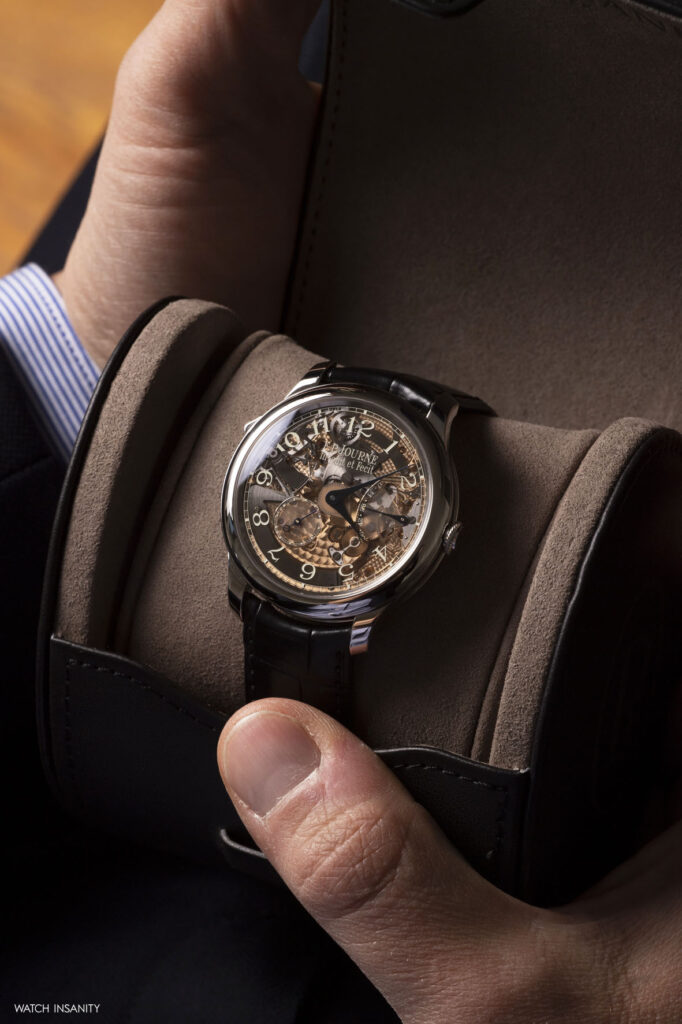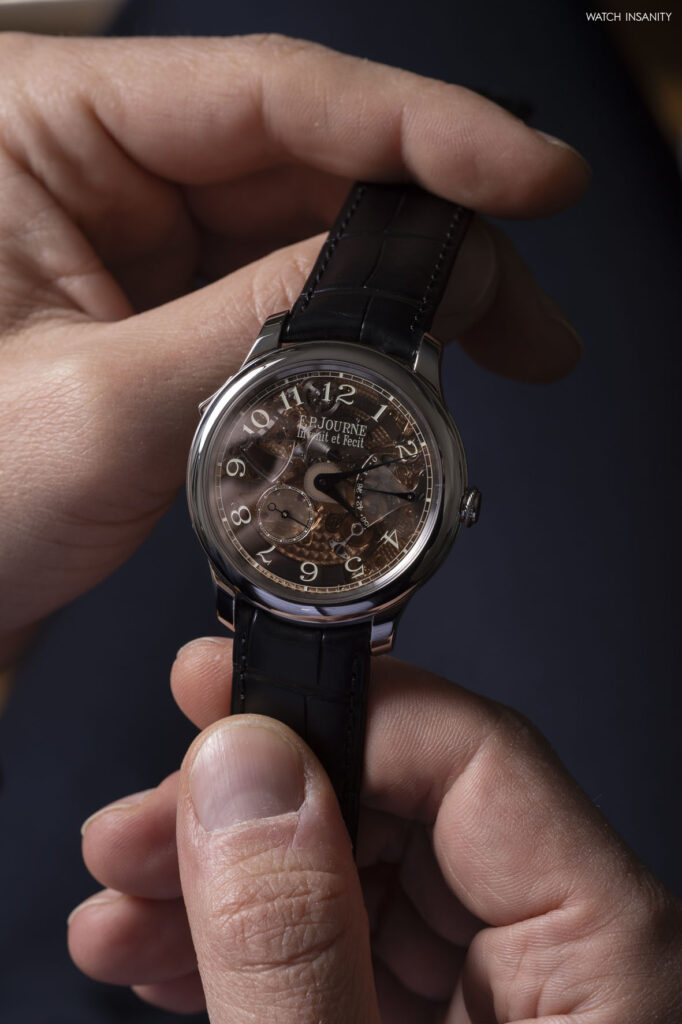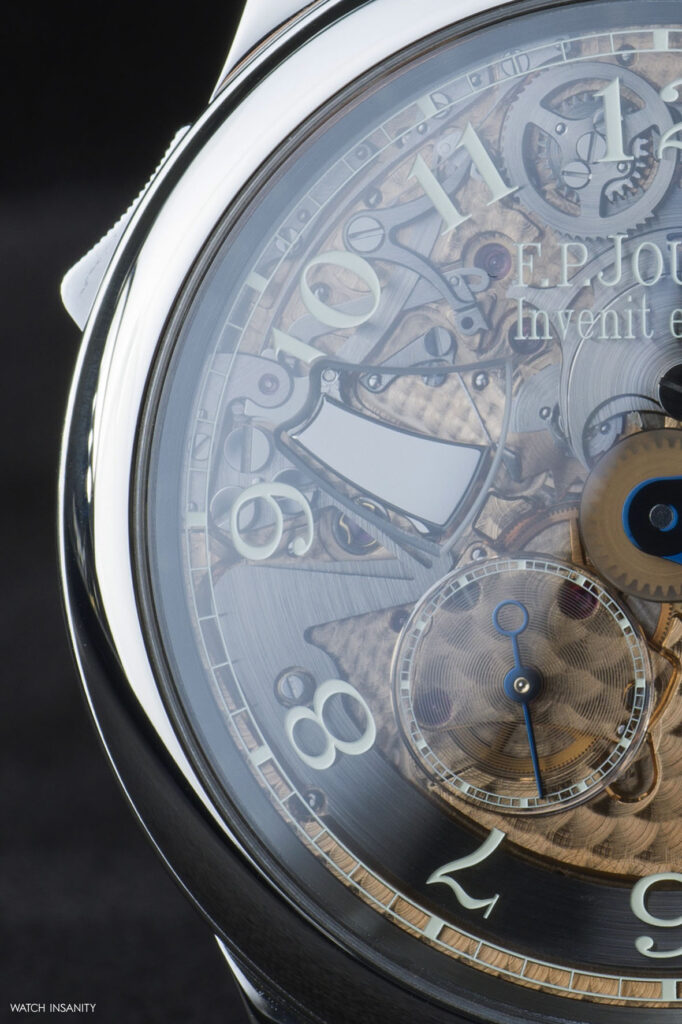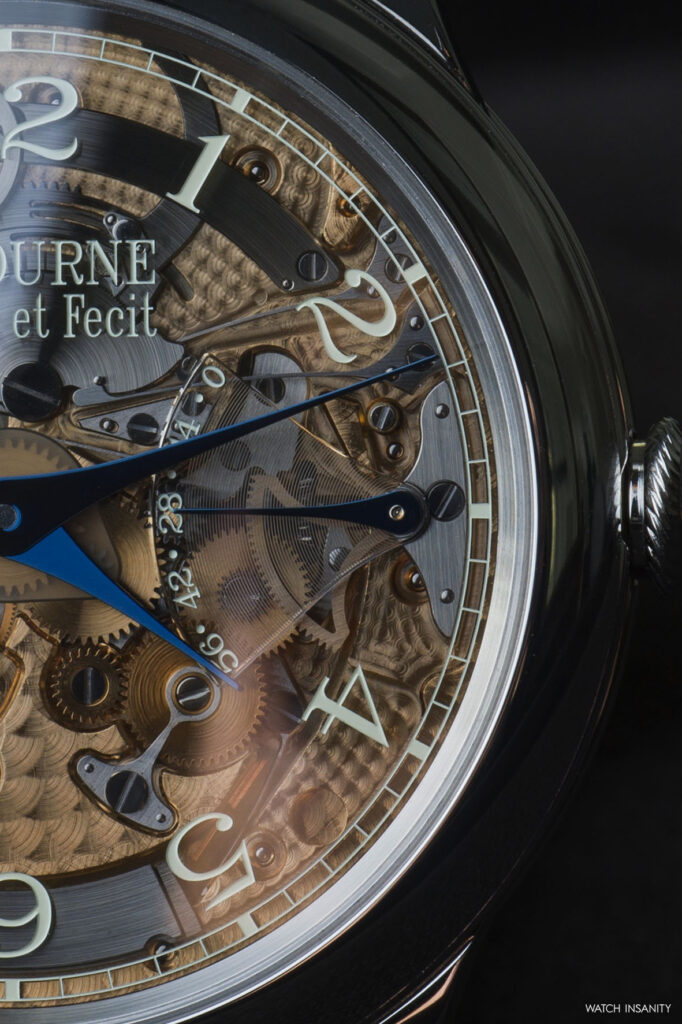F.P. Journe Répétition Souveraine: Time Has A Subtle Sound
30 December 2021François-Paul Journe’s fine watchmaking is a bit like those video games in which once you beat a level you get to an unexpected one – often even more difficult than the previous. The timepieces signed by F.P. Journe represent continuous challenge and discovery, with complications that the Master from Marseille manages to make appear natural even in extreme complexity. Level after level.
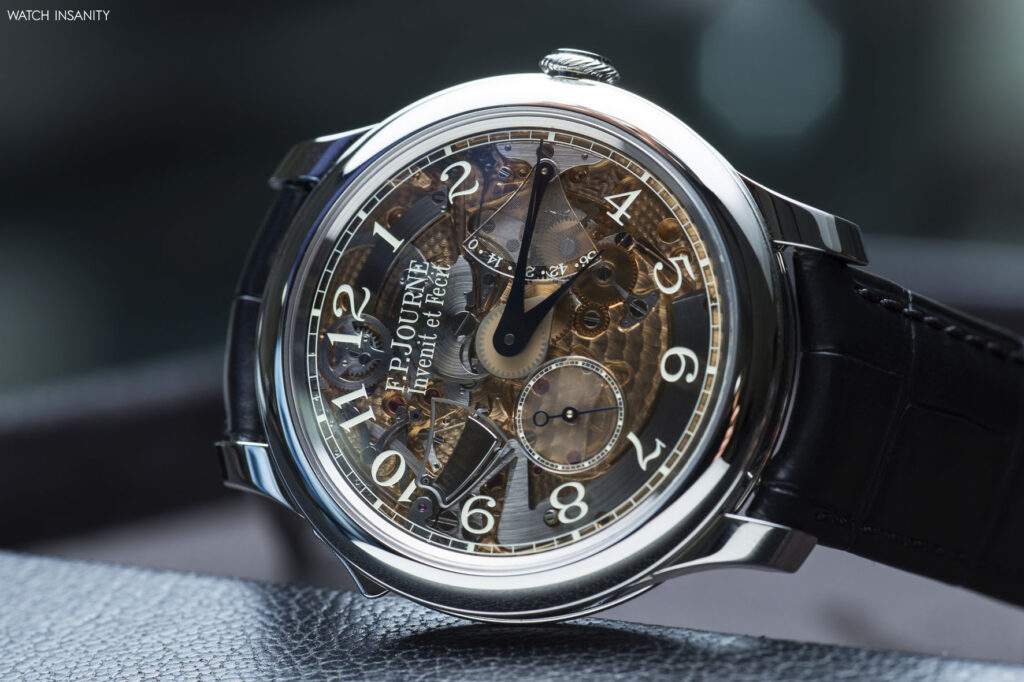
Who would have thought of making – and would have been able to make – an ultra-thin minute repeater watch if not him? After having experimented with the Grande and Petite Sonnerie while passing through the Sonnerie Souveraine, he wanted to get back to the “music” with the Répétition Souveraine, not to create a watch with any minute repeater (which would have been a considerable technical challenge by itself), but trying to push the limit even further.
SONNERIE AND MINUTE REPEATER
Just as a historical hint, we remind you that the oldest known minute-repeater watch was made in Germany at the beginning of the 18th century, allowing you to know the time even in the dark (a situation that wasn’t rare in past centuries) by pressing a button on the case. Now let’s go step by step and get a refresher about the minute repeater concept, differentiating it from that of Grande and Petite Sonneries. A little review for those who may not be clear about these kinds of “musical” watches.
Normally, the Grande and Petite Sonneries are more refined complications than the minute repeater. While the latter is usually activated by operating a “slide”, the Grande and Petite Sonneries strike the hours, quarter-hours and sometimes even the minutes when the watch strikes that particular time. These sonneries, therefore, chime at set times, both over the hour and at the exact hour, while the minute repeater is activated on request.
To further specify, the Grande Sonnerie is not activated by the wearer of the watch: the mechanism strikes the actual time every hour, and every quarter of an hour it repeats the hour, by adding the quarter or quarter-hours. Even the Petite Sonnerie does not require the intervention of the wearer: unlike the Grande, the mechanism does not repeat the time every quarter-hours but the watch strikes the current time every full hour, and every fifteen minutes it strikes the quarter or quarter-hours.
The minute repeater, on the other hand, is activated through a “slide”, usually placed on the side of the case, and strikes the hours according to how the watch is set; there are different versions, including the repetition every half-quarter and quarter-hour, every 5 minutes or every minute.
In both cases, we are talking about complications considered in the top range in watchmaking, which could only express themselves once entrusted to the hands of F.P. Journe. Because the Répétition Souveraine is a piece that fully embodies the genius of the French Master.
THE RÉPÉTITION SOUVERAINE AND F.P. JOURNE’S HAT-TRICK
This watch’s main feature, in addition to the excellent complication, is the caliber, which is only 4.50 mm thick. A technical virtuosity that required re-inventing the minute repeater mechanism from scratch. This redevelopment has made the application deserve two not-very-common patents.
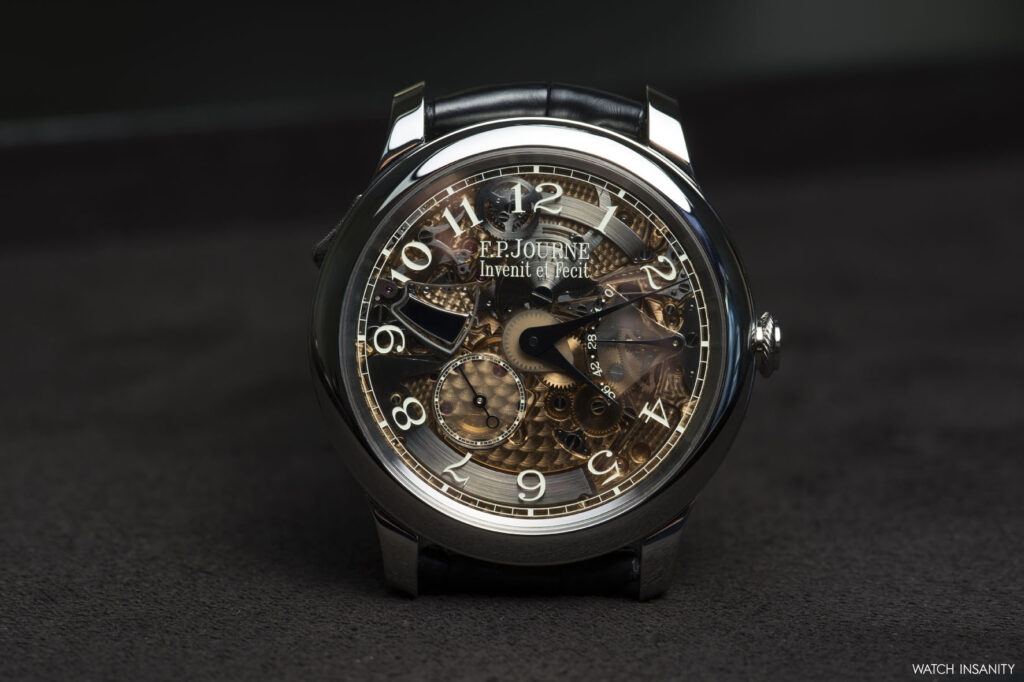
The first technical invention is the flat gong, a component that F.P. Journe also used in the Sonnerie Souveraine. The gong is mounted under the dial instead of around the movement: it allows more room for the movement and, when hit by the hammer, produces a clearer and louder sound than traditional gongs.
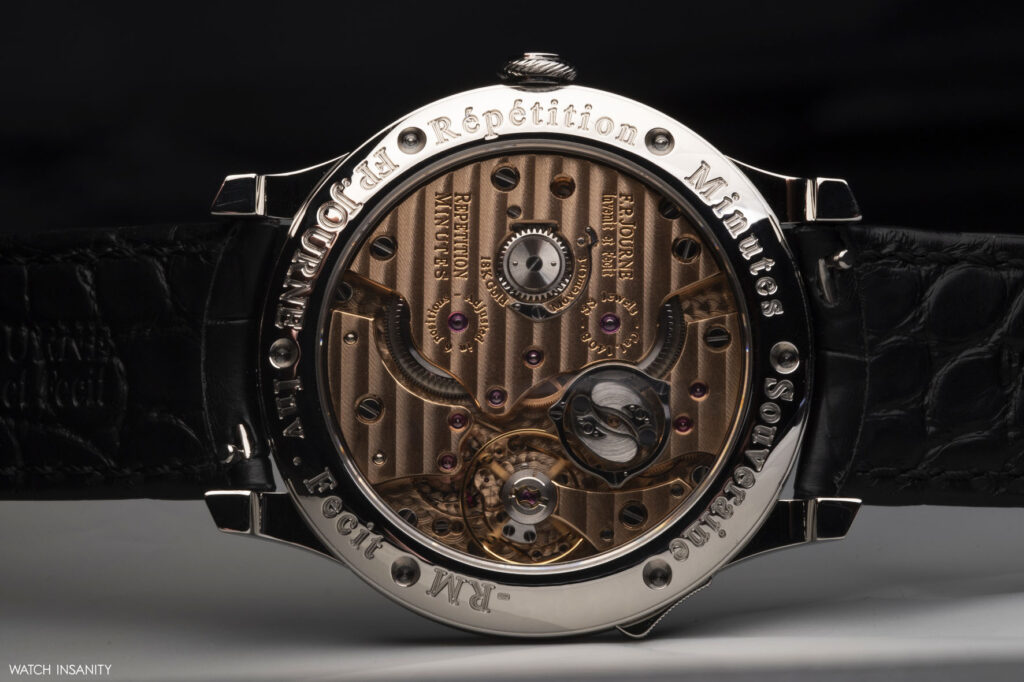
The second is even more technical and, in some ways, more revolutionary than the classic operation of the minute repeater as we know it. Unlike traditional minute repeaters, the hours and minutes of the Répétition Souveraine do share the same hammer; a pause is thus automatically inserted between the hour and minute chimes when there are no quarter-hours. The quarters sound with classic double chimes. Together with an innovation in the system of striking racks and strike selection mechanisms, this made more space for the movement possible.
A STEEL SOUND
So the hand-wound caliber 1408 came to life: from the sapphire crystal case back it looks more like a hand-wound caliber than a grand complication. This is thanks to the inventions mentioned previously, but also to the finishes of the 18-karat rose gold base-plates and bridges, and the twin barrels barely visible below the bridges. Caliber 1408 works at 21,600 vibrations/hour and has a power reserve of 56 hours +/- 2 depending on the use of the minute repeater; a complication that is still energy intensive, despite the inventions of the Master.
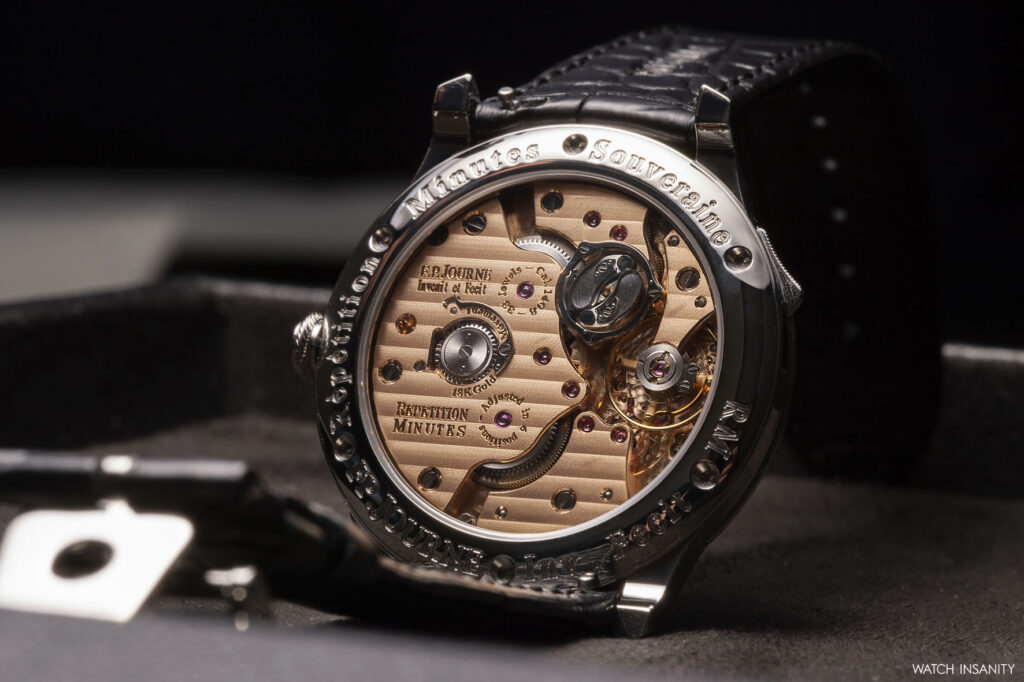
The movement is housed in a 40mm stainless steel case, a rather unusual material to find in a watch by F.P. Journe. The Master has accustomed us to the preciousness of platinum and gold. The choice of steel is motivated by functionality rather than aesthetics: steel has physical features that allow it to resonate in a better and clearer way. Moreover, the case of the Sonnerie Souveraine is also made with the same material.
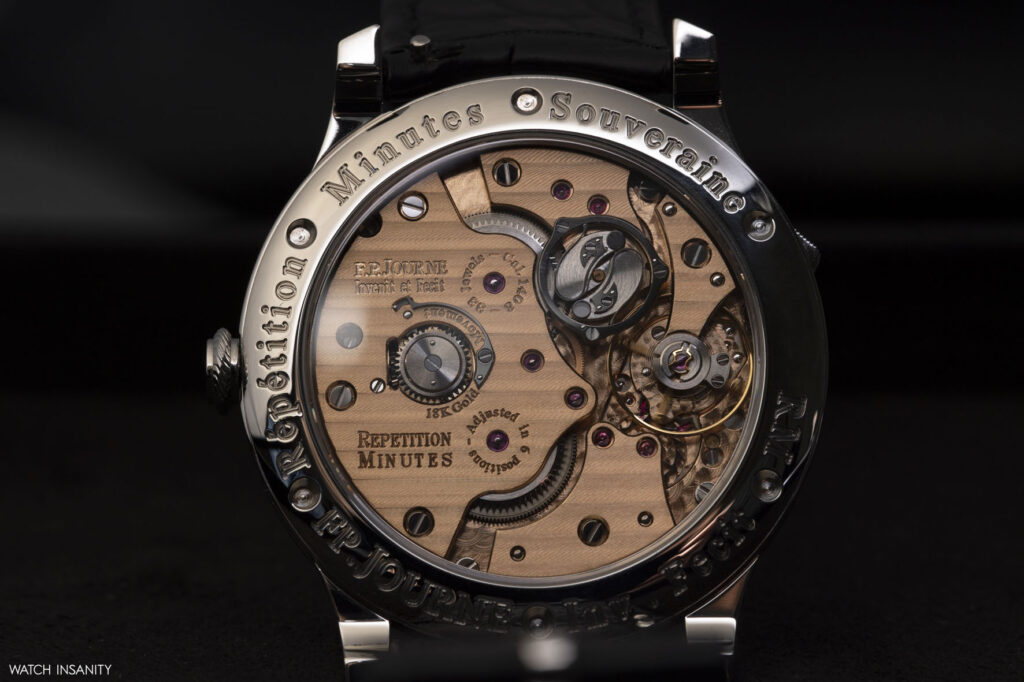
F.P. Journe also dedicated the same care in processing steel than he dedicates to more noble materials, alternating polished and satin surfaces in the case, bezel, lugs and crown.
RÉPÉTITION SOUVERAINE: FOCUS ON THE DIAL
The Répétition Souveraine’s dial would deserve a whole article, for the richness of its workmanship. The silver version has the classic Clous-de-Paris guillochage finish in the center, rounded by the satin finish of the hour disc, with blue lacquered Arabic numerals; the sub-seconds sub-dial (at 7:30) and the power reserve sector (at 3 o’clock) have a moiré finish, a process that gives them a marbled effect. There’s a window at 9:30, highlighting the striking hammers at work – the real stars of the watch.
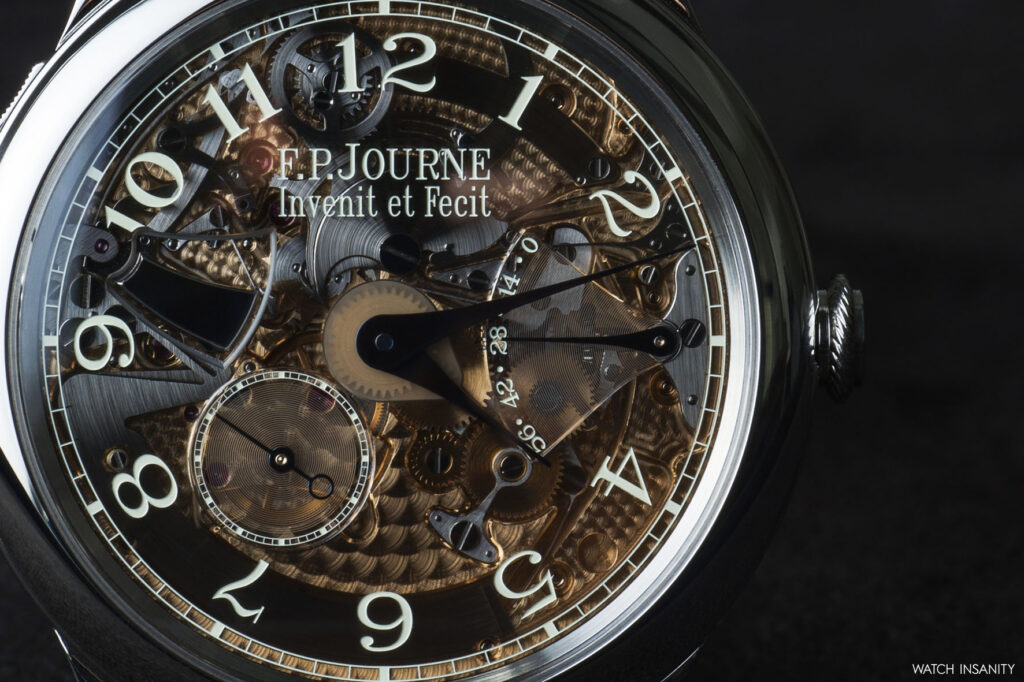
The version with the smoked sapphire crystal dial is even more spectacular. Available on request, it has the same blued-steel hands as the silver reference, but the numerals are lacquered in ivory stamping. The beating heart of the watch, the caliber 1408, is revealed without hiding anything and the silver dial’s protagonists, the hammers, here become a part of the whole mechanical orchestra that brings the watch to life.
The aesthetic orchestra, on the other hand, includes a leather strap or a five-row polished steel bracelet, both with folding clasp. Strap and bracelet are certainly not secondary details but they complete the watch in an impeccable way, as you can understand by handling it. Is this possible? Of course, thanks to the collaboration of GMT “Great Masters of Time”, a partner of F.P. Journe since 2007 which, in its Espace Journe, allows collectors and enthusiasts to see and touch the complete watch collection.
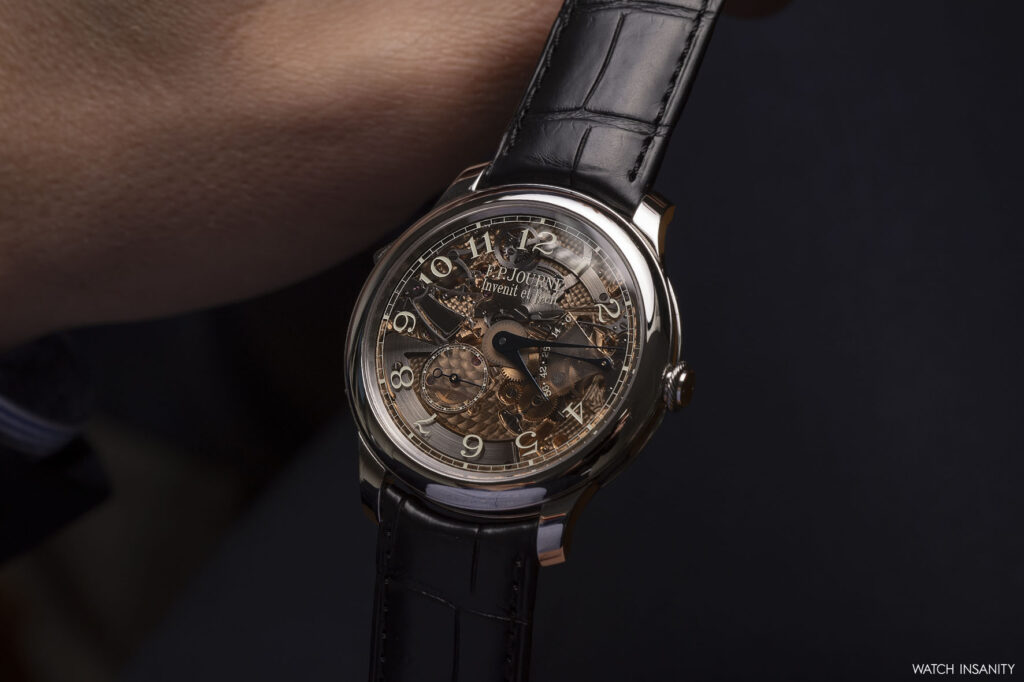
Because in a watch such as the Répétition Souveraine, the details make the difference on the whole, not just on the movement. As each timepiece signed by F.P. Journe teaches us. (Price €. 275.000)
By Davide Passoni

